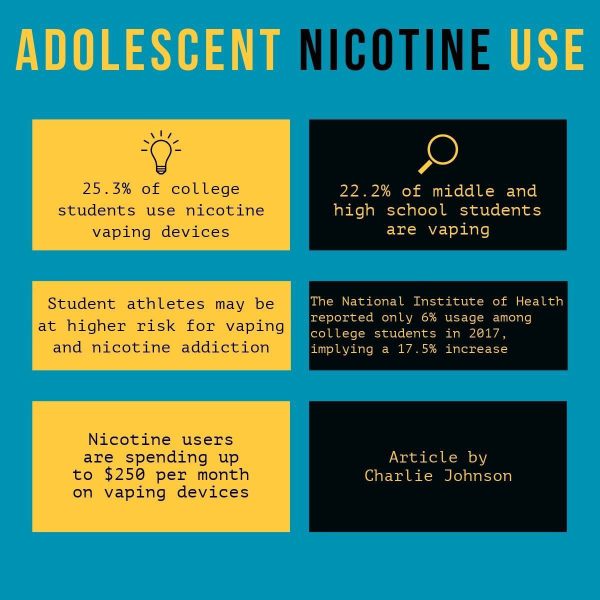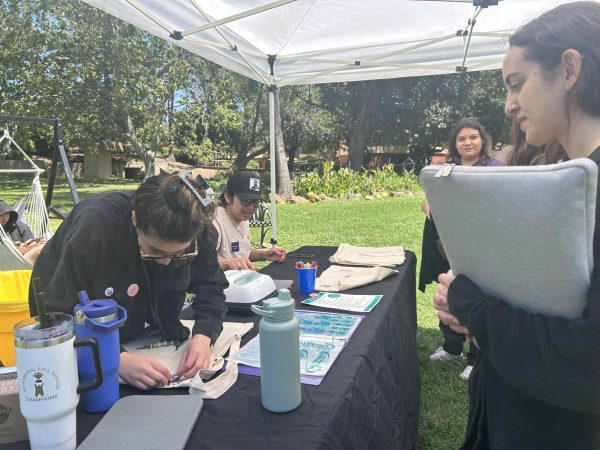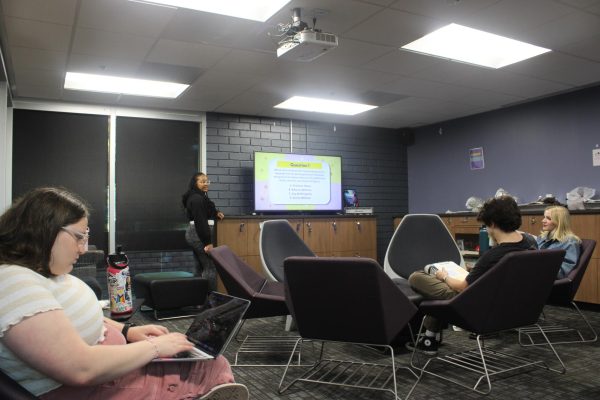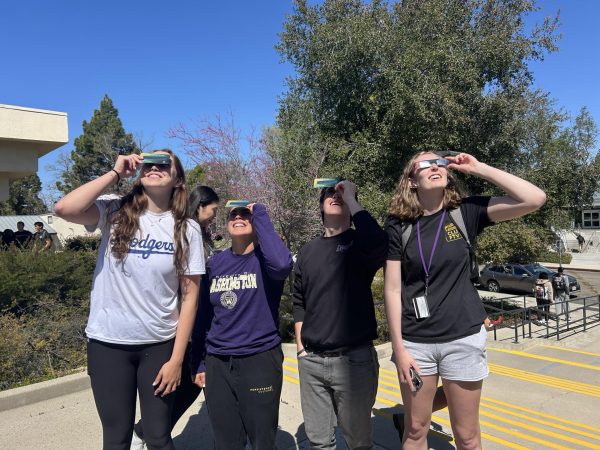Fire season arrives at California Lutheran University
November 4, 2019
On Wednesday, Oct. 30 and Thursday, Oct. 31, California Lutheran University closed its Thousand Oaks, Oxnard, Westlake and Woodland Hills campuses because of poor air quality and other impacts from the Easy Fire in Simi Valley.
Of the numerous wildfires to affect Ventura County in recent years, the Easy Fire resulted in the closest evacuation zones to the Thousand Oaks campus, with voluntary evacuation zones about a mile away. However, fire perimeters remained approximately three miles away according to maps on Ventura County Fire Department’s Twitter, further than last November’s Woolsey Fire.
“This fire was challenging as the evacuation area was extended [near] campus within two hours of the fire starting and we were having to prepare for potential evacuation,” said Associate Vice President for Planning and Operations Ryan Van Ommeren in an email interview. Responses provided by Van Ommeren in this article were reviewed by University President Chris Kimball.
At 7:10 a.m. on Oct. 30, a Campus Safety alert informed the campus community that classes were scheduled to proceed. However, Van Ommeren said the decision to close campus was made following an emergency response meeting at 7:20 a.m.
“When we arrived…there was relatively heavy smoke on campus. We then learned immediately that major transportation routes to campus (the 23 fwy and Olsen/Madera Road) were closed or were being closed, and that the fire evacuation area had been established that would affect many staff, faculty, and students,” Van Ommeren said.
Van Ommeren said the university president has the final authority to close campus. He said in general, factors affecting the decision to close include an assessment of overall on-campus safety, availability of safe transportation routes to campus, evaluation of activities happening on campus on the closure date, and an evaluation of the impact of evacuation zones on faculty, staff and students.
At 3:28 p.m. on Oct. 30, another Campus Safety alert stated that Cal Lutheran would remain closed on Oct. 31. Van Ommeren said the closure continued because major road closures and evacuation areas impacting the community were not lifted.
Cal Lutheran’s parking lots were largely empty Wednesday and Thursday, as only critical personnel and some residential students stayed.
Senior Shysel Granados, a resident in Grace Hall, said she stayed on campus because she does not drive and did not think she was in “imminent danger” despite poor air quality.
“We felt pretty good, especially since the [resident assistants] were coming by and checking on us every couple hours,” Granados said. “[The air quality] was really bad in the morning cause I remember waking up and it smelling ashy in my room… it felt like someone has left the window open.”
Those who remained on campus were informed via email that “water, food and other shelter provisions” were being prepared in case of an emergency evacuation, and that students could depart campus safely on Highway 101.
Van Ommeren said evacuation is a multiple-stage process involving identifying the number of students who require evacuation, arranging for buses through a private company, arranging a destination such as through mutual aid agreements with other local universities, and gathering students at a safe staging area such as Ullman Commons or Gilbert Sports and Fitness Center. Depending on road closures, a shelter in place policy may be followed with fire department coordination.
For the Easy Fire, buses and a destination were prepared but did not have to be used.
“We made arrangements to transport the students on campus to the shelter provided for Thousand Oaks residents. Additionally, we made arrangements with a local church and with Pepperdine to provide additional options,” Van Ommeren said.
The Easy Fire grew quickly from its incitement at approximately 6 a.m. on Oct. 30, expanding to 1,300 acres and threatening 6,500 homes by 10 a.m., and destroying two structures by 6 p.m. according to VCFD. However, the fire maxed out at 1,806 acres and was fully extinguished on Nov. 2, according to the California Department of Forestry and Fire Protection.
Additionally, despite being monitored for a Southern California Edison power outage, the main campus did not have to resort to generator power, Van Ommeren said.
However, all on-campus houses used by residential students and as offices lost power. Senior Landon Navarro said his on-campus house lost power around noon on Oct. 30, with power being restored the morning of Oct.31.
Navarro said his resident assistant was aware of the situation, but the university did not provide information on the outage to him and his roommates.
Van Ommeren said the outage was a repair outage and not associated with the SCE precautionary outage program.
“We had outside security come in to provide a ‘fire watch’ of all the homes until the situation was resolved… [which] consisted of patrolling the homes from the outside,” Van Ommeren said.
As the Easy Fire gained containment, another fire brokeout at 6:15 p.m. on Oct. 31, according to VCFD. The Maria Fire near Santa Paula was 9,412 acres, 80% contained and had destroyed two structures as of 7 a.m. on Nov. 4, according to VCFD.
Residents of Ventura County can receive up to date information on wildfires though VCFD’s website and Twitter account, and by registering for emergency notifications on vcalert.org or by calling 805-648-9283.











